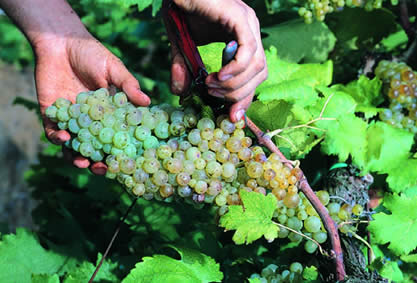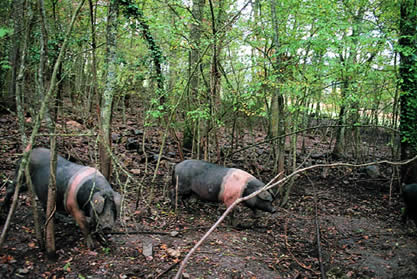| There are places where
everything seems good - the bread and the wine, the landscape,
the art, the roads. Places and things in harmony with each other,
whose common roots are the people who inhabit those places and
who, day by day, handle and shape resources to make them more
liveable, both in substance and in appearance. Put more simply,
while it is true that you cannnot make good wine without good
grapes, it is equally true that it is a necessary but insufficient
condition. In fact, if the expert hands of man do not intervene,
tha basic product cannot be other than improved. But if those
same hands do not have good grapes, it will be impossible do have
a fine wine. Whichever way you look at it, it is the grapes that
make a good wine if man does not do all he can to ruin the quality.

This, in a nutshell, is the spirit of the Guida all'Andar lento
of Arte all'arte 2002. the earth, human hands, the market. This
is the direction that Michele Taddei and Roberto Rossi, together
with this year's new travelling companion, friend and colleague
Marcon Antonucci, want to give to the guide for a taste-filled
itinerary around the Arte all'arte locations. Previous editions
of the guide focused on typical products (2000) and the people
living in the countryside of central tuscany (2001). Nowadays,
everybody knows how to recognise the quality of a fine glass of
wine, the fragrance of still-warm bread, the freshness of the
best extra-virgin olive oil, the tastiness of a form of pecorino
or of a local variety of ham. But what lies behind it all? Sangiovese,
Trebbiano, Leccino, Moraiolo, Appenninica, Cinta, Costoluto, Chianina,
Zolfino are just some of the names of the products we eat every
day but which we have often barely heard mentioned. These are
the products that occupy the centre spot in this year's guide
- the base product. The guiding criterion of this year's guide
will, then, be the primary materials which, skilfully worked by
man according to traditional 'recipes' but also with flashes of
innovation, give the final product. Brunello would not exist without
historic figures like Ferruccio Biondi Santi, but let's remember
that his chief merit is having known how to bring the best out
of Sangiovese grosso, the raw material of the wine. Grape, olive,
wheat, pig, chianina and maremmana cattle, milk, sheep's meat,
the landscape itself, will provide us with the coordinates of
our tour round the Sienese countryside, amongst its traditions
and history, gastronomic or otherwise. With an eye open to the
future and to innovation.

Michele Taddei, Marco Antonucci, Roberto Rossi
|


